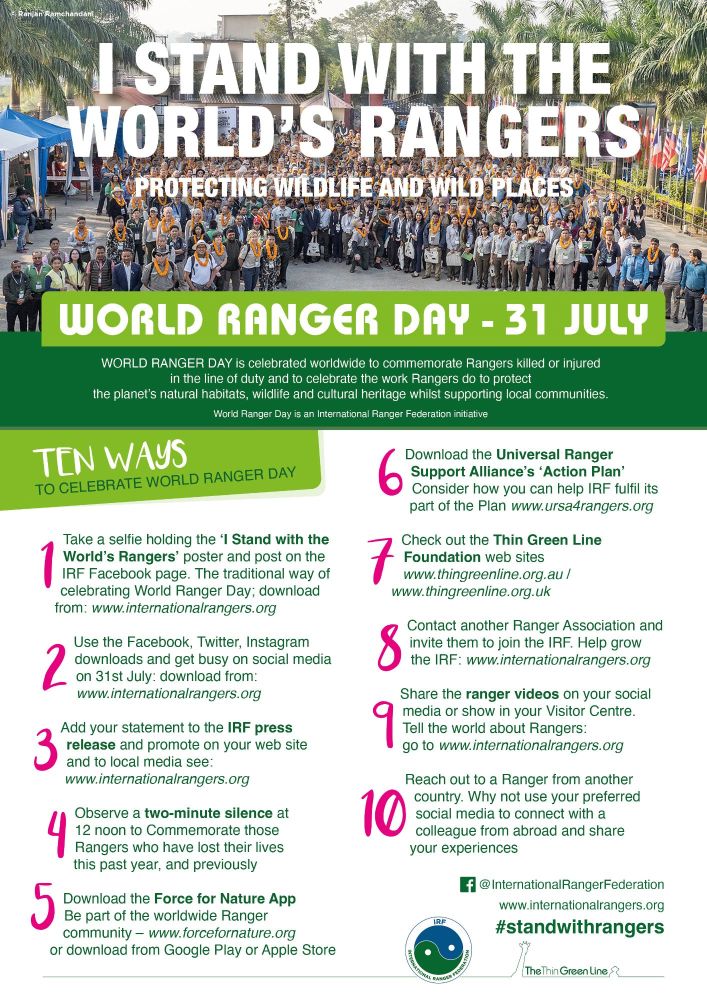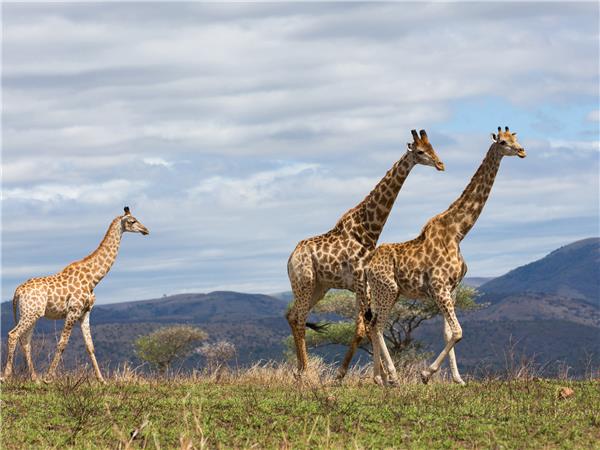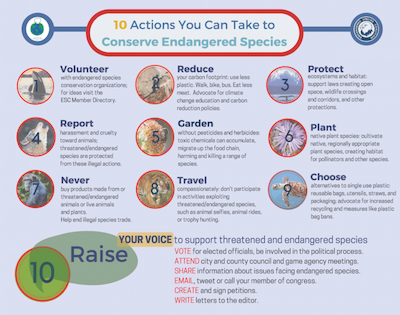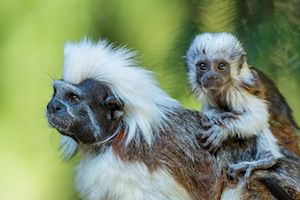It’s World Ranger Day on 31 July.
Posted on
|
World Ranger Day is on 31st July Around the world there are many people who are willing to put their lives on the line in order to protect endangered animals and habitats. The International Ranger Foundation (IRF) is the official body representing rangers around the world. It was established on 31st July 1992, after a year spent setting up and planning for the establishment and development of the organisation. The aim now is to drive through this development so that there is a professional body of rangers around the world. The African Wildlife Foundation has
So the theme for World Ranger Day for 2023 is Rangers – The Natural Solution To Achieving the 30X30 Biodiversity Targets. Take a look at the "I am a ranger" video on You Tube here from the IRF Celebrating our rangers on World Ranger Day Celebrating gorilla trackers and World Ranger Day, Sadly, last year 148 rangers died in their line of work. Many of these deaths were attributable to homicides and others to vehicle accidents, as the video below explains. There is a lot of information about rangers on their website, so please explore their website. It works with The Thin Green Line to promote the initiative of World Ranger Day. World Ranger Day is a chance for all of us to show our appreciation for the work that wildlife rangers and guardians do and offer our support in whatever way we can and to remember those who have died or been injured doing this vital work and to think of the families they leave behind.
And it’s good to know that there is something you can do to help wildlife and locals in their communities at the same time, and we thought we’d do a roundup of charities and organisations working to help in this way. Sometimes wildlife rangers are called wildlife guardians. Celebrating our Rangers
Support World Ranger Day on social media with hashtags: #WorldRangerDay2023 #WorldRangerDay #WildlifeRangers #RangersDeserveMore #Istandwithrangers The Thin Green Line Foundation Based in Australia, the Foundation works with ranger groups, ranger associations and conservation partners in over 60 countries. They say it’s estimated that over 1,000 park rangers have been killed n the line of duty over the past 10 years. They are dedicated to providing Rangers worldwide with the assistance they deserve and need. Ol Pejeta Project Ranger The World Land Trust has a Keepers of the Wild initiative. The rangers are working on the front line of conservation, safeguarding some of the world’s most threatened animals and the crucial habitats in which they live. They protect reserves from poaching and logging, and importantly, link to local communities, building trust, helping to change attitudes and find practical solutions to problems. You can support Keepers of the Wild by making a donation. The David Shepherd Wildlife Foundation works to support rangers in both Asia and Africa. You can support wildlife rangers here and help them conserve nature. Their work includes carrying out anti-poaching and anti-trafficking patrols across national parks, finding and removing wildlife snares and collecting essential data on endangered speices and their habitats. They also work with communities to raise awareness and mitigate wildlife conflict. Click here to see how the Big Green Match Fund helped DSWF's frontline conservation teams with the Living with Widlife Appeal. The Global Conservation Force African Parks Virunga The Gorilla Organisation has a supporting rangers scheme in the Democratic Republic of Congo and they act as the eyes, ears and voice of the forest. They cut snaes, save injured gorillas, combat the militias running the blood minerals trade, monitor the gorillas’ health and collect vital conservation data every day. Find out more here. Tigers4ever Orangutan Foundation The Lewa Security Team consists of field rangers, radio operators, gatekeepers, baby rhino keepers, anti-poaching rangers and the tracker dog unit. The Anti-Poaching Rangers and Tracker Dog Unit work day and night to protect wildlife and keep them safe, especially rhinos and elephants. The tracker dog unit has four dogs and their handlers, the dogs act as efficient trackers, as they can pursue suspects for lengthy distances. Save the Rhino Tusk The charity Tusk give a Wildlife Ranger Award every year to give international recognition to the men and women who face danger every day to protect the wildlife and its ecosystems in Africa. There are also rangers in other countries such as Australia and America and the UK, working for organisations such as national parks and they are also essential to protecting the environment and keeping wildlife safe. And a very big thank you to each and every wildlife ranger working to care for and protect our wildlife and their habitats. And thank you to their families too. Please everyone show you support them too. |



